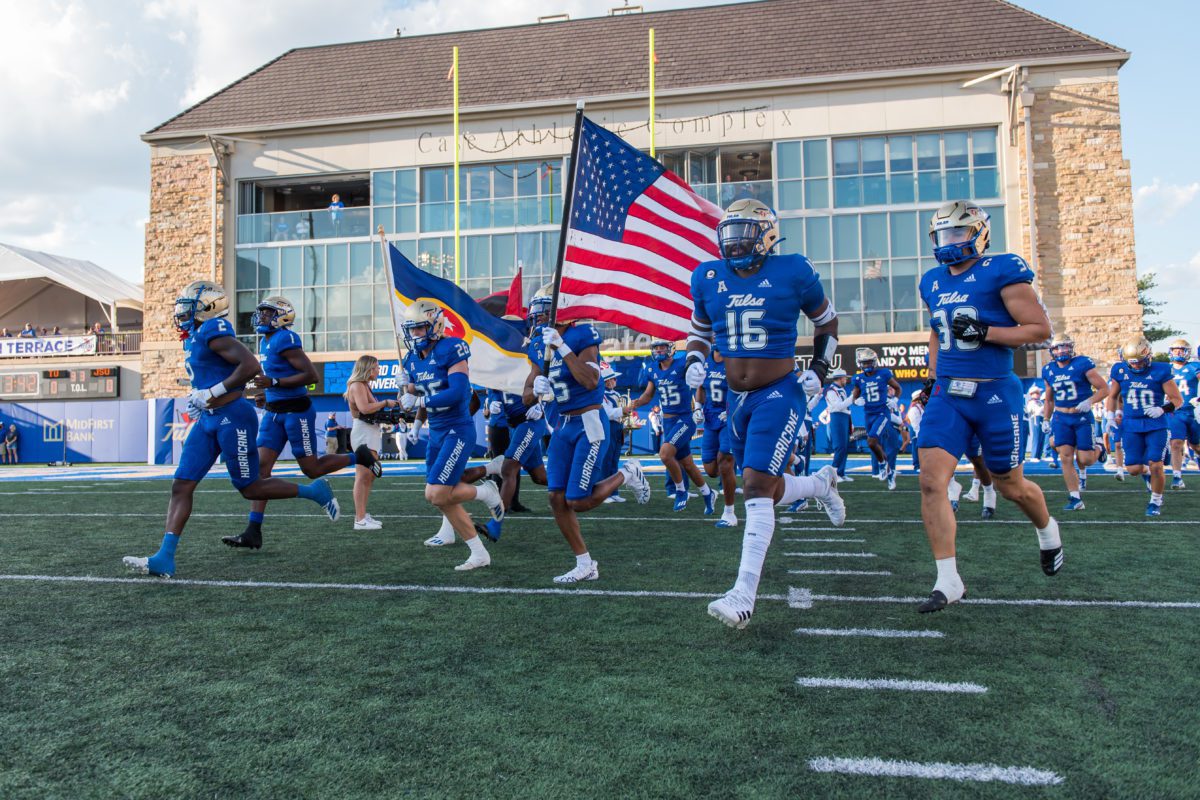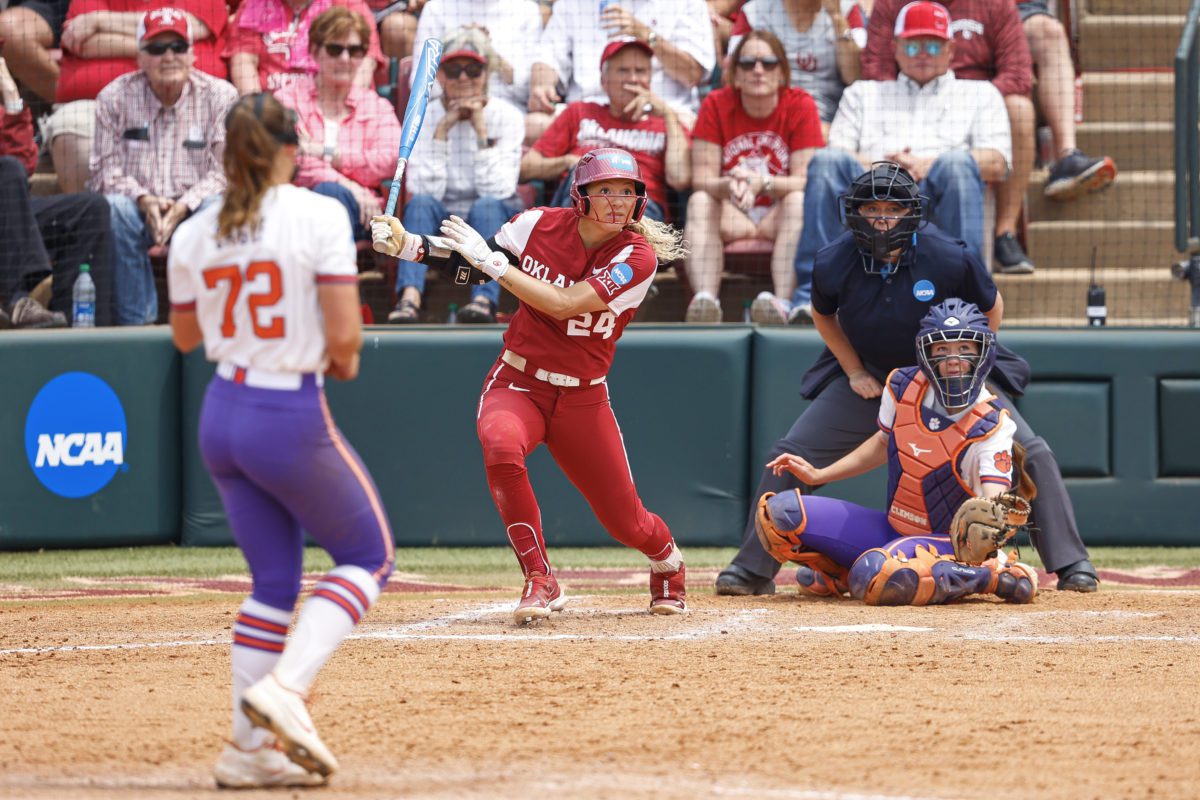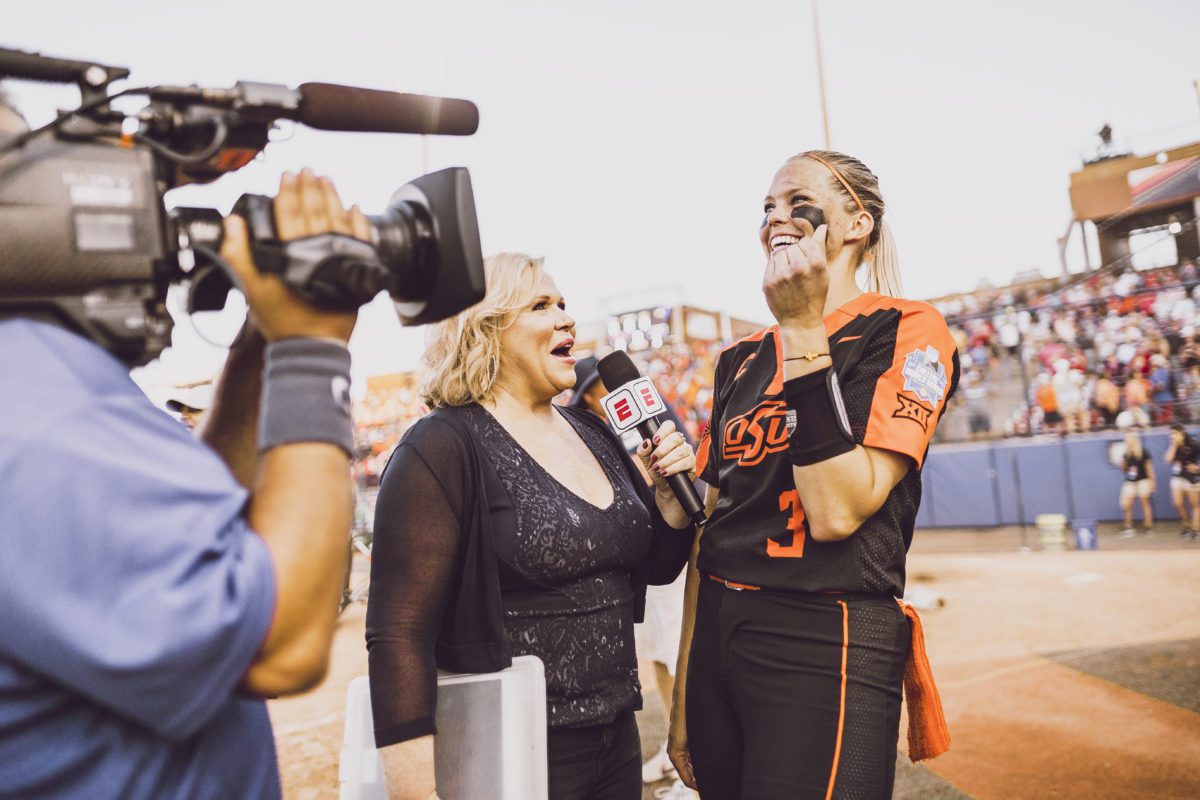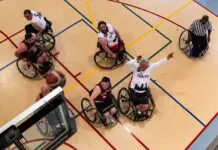Hazing: Is It An Issue?
Hazing – a ‘rite of passage’ groups invoke to embarrass new members – is a controversial subject. Some believe light hazing can bring people or team members closer together. College officials, on the other hand, don’t tend to share that viewpoint.

Photo courtesy TU Athletics
“Hazing in its different forms can undermine any organization,” says Gavin Lang, associate A.D. of communications for Oklahoma State University Athletics. “The best way to stop hazing is through proactive communication from the coaches to student-athletes – that hazing is not acceptable, and that there are consequences. If hazing does happen and the coach is unaware, it’s important for student-athletes to communicate it to the coach, and for the coach to bring it to an end. Without a clear set of expectations and communication, the problem grows.”
Many school leaders, after seeing the sometimes fatal consequences of hazing, take a zero-tolerance approach.
“We do not have a tradition of hazing in athletics at The University of Tulsa,” says Rick Dickson, vice president and director of athletics at the University of Tulsa. “It is inconsistent with who we are. Hazing is not tolerated – much less condoned – at TU. Following a recent incident at Northwestern, we met with our teams to clearly state this type of conduct is unacceptable and to provide educational and training components for our student-athletes.”

Photo courtesy OSU Athletics
Driving Excitement
Some sports naturally draw fervent crowds and don’t need gratuitous marketing or bonus fluff to get people excited … while other sports may benefit from incentivizing attendance.
“Every sport is as important as the next. Football and basketball are on a bigger stage, provide a larger revenue stream and are sports that draw more spectators, but we want all our student-athletes to experience the best atmosphere possible,” says Dickson. “We try to create an environment and a pricing structure for all sports that make it affordable and fun for fans to attend soccer, volleyball and softball just as easily as basketball and football.
“Home events for cross country, golf, tennis and track are free and open to the public. We take great pride in being a well-rounded program of excellence. The fact that we enter year ten in the American Athletic Conference with the most championships of any other league school is evidence of that exceptional success.”
OSU also takes a proactive approach to sports attendance.
“There are countless ways to incentivize attendance for sporting events other than football and basketball,” says Lang. “Of course, it helps when the team is successful or when it’s playing a high-stakes game, but at Oklahoma State, the big thought is that we want our fans to feel a connection with the teams and the student-athletes, that goes beyond wins and losses – we want them to see our student-athletes as people. If fans connect with our student-athletes as people, the chances improve of fans wanting to show support by going to the games.”

Photo by Mike Houck, OU Athletics
Teaching Sportsmanship
In today’s highly competitive sporting atmosphere, spectators have come to expect the occasional post-score hijinks. Some athletes are even known for being cocky, brash and unsportsmanlike – and they may be popular because of it. College coaches and officials, however, are working to teach sportsmanship – no matter the situation.
“Sportsmanship is critical to a good experience for the teams and the fans at college athletic events,” says Dickson. “TU emphasizes the importance of good sportsmanship with our student-athletes overall, and our coaches continuously reinforce this with their teams. Our actions should reflect the high standards of integrity and ethics that characterize participation in the highest levels of competitive sports.”

Photo by Mike Houck, OU Athletics
Respect for the sport itself can be key.
“There is a balance when it comes to sportsmanship,” says Lang. “The student-athletes who make it to this level are remarkable at what they do and for most, a fiercely competitive nature serves as a competitive advantage. That said, the game needs to be respected. That’s where program culture fits in. Coaches in particular set the expectation for what is and what isn’t acceptable. Those conversations happen in a variety of ways – sometimes with the whole team, sometimes on an individual basis.”
College athletes are taught to handle disagreements, controversial calls, wins and loses with grace. Sometimes, this includes penalties.
“In some sports, the game polices itself as it pertains to sportsmanship,” says Lang. “One example is football, where there is an actual 15-yard penalty for unsportsmanlike conduct. Basketball has technical fouls. Beyond in-game consequences from the sport’s rule book, sportsmanship is an area where coaches set and enforce team culture. If a student-athlete does something unsportsmanlike, it is not uncommon for the coach to take him or her out of the game, and depending on the severity of the offense, to suspend the student-athlete – or worse.”
Athletes and Media: Expectations
As if playing a sport and getting an education aren’t enough of a challenge, student athletes are expected to deal with the media, too, from press conferences, interviews and deals, to how they present themselves on social media.

Photo courtesy OSU Athletics
“Student-athletes have a heavy load to carry with academics, athletics and other activities,” says Dickson. “Media is a part of it, but it’s fit around the student-athletes’ schedules.”
Lang continues: “Student-athletes from all sports at Oklahoma State get media exposure, which is a good thing, because it’s proof that people care. Every interview is a chance to tell your own story, your own way and to be a positive ambassador for the team and school. Not everyone is comfortable going on camera or speaking to reporters, but just about everyone understands the value of granting interviews. The expectation at OSU is that student-athletes and coaches participate in interviews when requested. There are times when it doesn’t work out, but for the most part, it’s not a problem.”
Being a Student First
Students – whether athletes or not – deal with academic rigor, study hours and an expectation of integrity. This can be a challenge for students playing athletics at a high level with much on the line outside the classroom. Schools find different ways to ensure that athletes place their education and student experience first.
“At TU, our students’ well-being and academic lives come first,” says Dickson. “We take every step possible to ensure each student-athlete receives the support they need in all aspects of their college experience.”
The University of Oklahoma also places an emphasis on the academic life of its athletes.
“The University of Oklahoma Athletics Department employs a holistic approach to developing student-athletes beyond their time competing,” says Mike Meade, OU’s senior associate athletics director for academic services. “OU Athletics’ Prentice Gautt Academic Center is a comprehensive support services unit for intercollegiate student-athletes, offering a wide array of services to ensure students prioritize their academic goals and responsibilities.

“Within the Academic Center, OU provides its student-athletes with access to a full staff of academic advisors and learning specialists; a career center with ample resources for students to prepare for life after college; centers for math, tutoring and foreign language, designed to meet student-athletes precisely where they are academically; study abroad opportunities that seek to broaden student-athletes’ perspectives; and PROS, or Psychological Resources for OU Student-Athletes, which features a team of licensed psychologists who deliver premier mental health care services for student-athletes’ academic, athletic and personal success. Beyond these support services, OU Athletics has cultivated an environment that places a premium on education above all else, with everyone from the athletics director to head coaches to support staff ardently supporting the mission and ensuring OU’s student-athletes are positioned for success academically.”
OSU also dedicates resources and staff to guaranteeing student athletes have a balanced, overall student experience.
“We’re very fortunate here at Oklahoma State to have a dedicated staff in our Academic Enrichment Center, led by long-time director Dr. Marilyn Middlebrook,” says Lang. “She is so closely woven into the student-athlete experience that many call her ‘Mom.’ In partnership with the individual sport coaches, Dr. Middlebrook and her team ensure that academics are taken seriously.”
Paying Student Athletes
“Most in major college athletics don’t have an objection to student-athletes profiting from their name, image and likeness,” says Lang. “The NCAA’s interim policy says using that as a recruiting inducement to come to a school is illegal. Schools are doing it anyway and not being punished. Once that is sorted out, things have a chance to get better.”
























